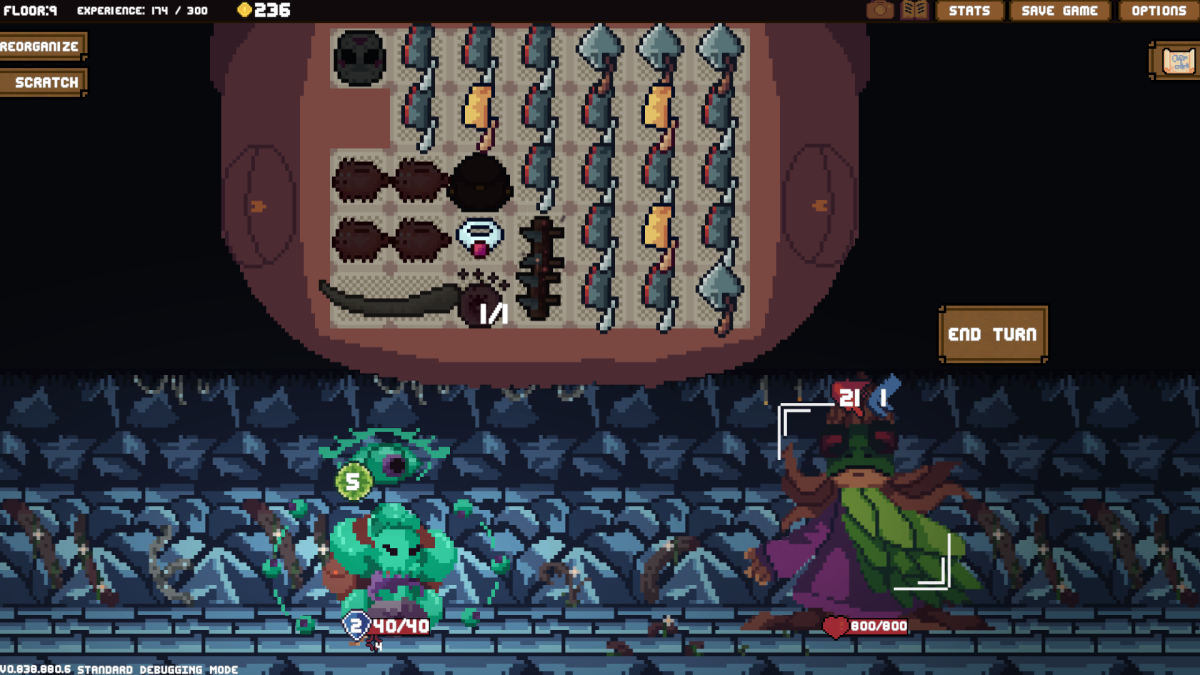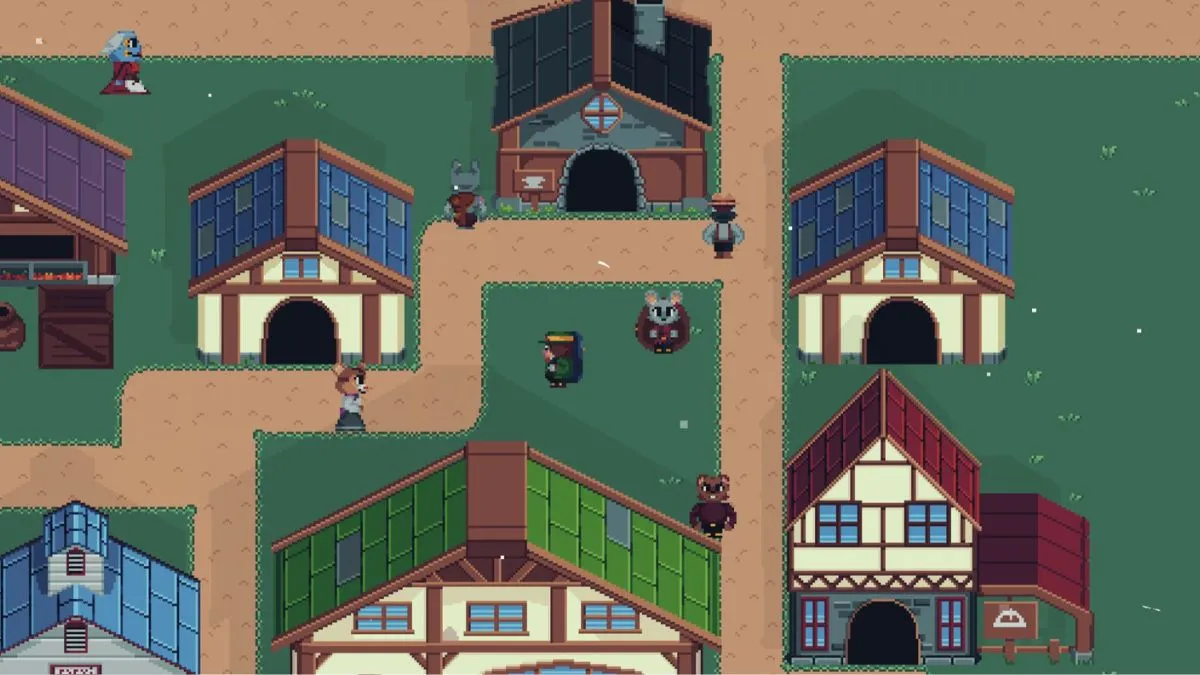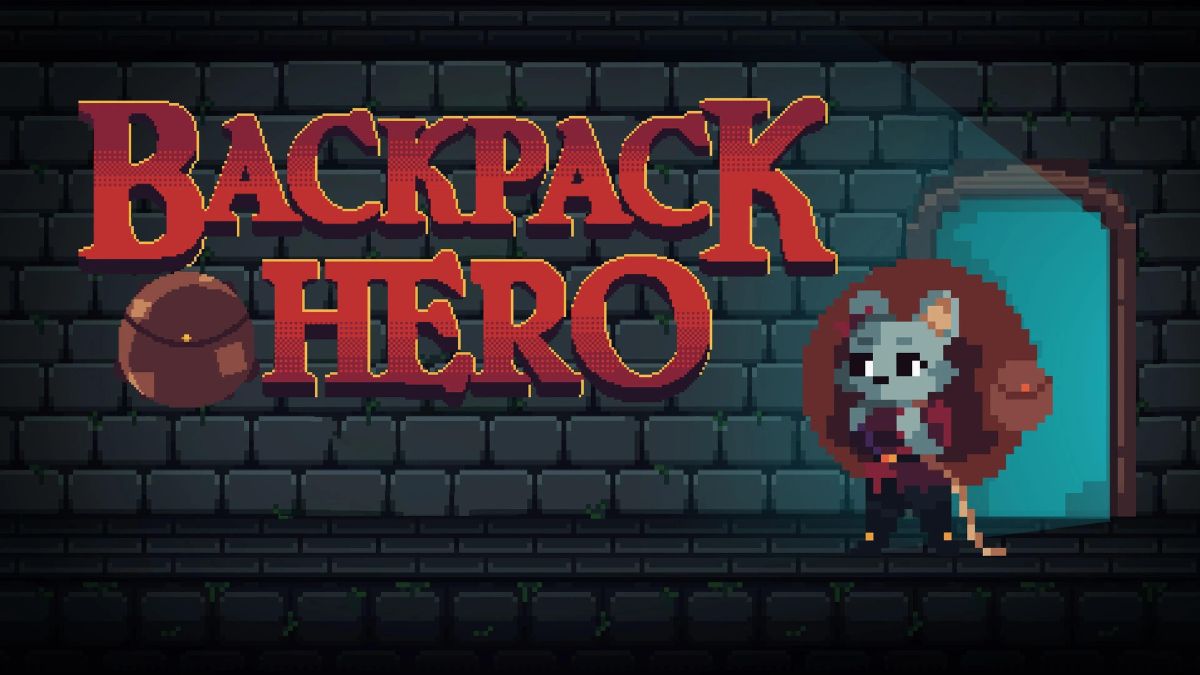In any other game, managing my inventory would be a real pain in the butt. It’s tedious having to constantly empty out all the junk piled up in my satchel. Like other novel indie games, Backpack Hero tries to make the opposite true.
It’s just unfortunate that the rest of the game doesn’t live up to the puzzling elements of Backpack Hero‘s core concept.
Taking Inventory in Backpack Hero
Effectively taking the inventory management system from Resident Evil 4 and expanding it out into an entire game of its own, Backpack Hero sees players take on the role of the aptly named Purse. A daring young mouse who makes it her mission to explore the local dungeons, she’s equipped with a magical bag that expands, allowing her to pick up more loot during her expeditions. Leveling up doesn’t necessarily impact any skills or damage modifiers; instead, it grants players a chance to grow their backpacks by selecting a handful of extra inventory slots. See, Backpack Hero is less about action and more about synergies, playing more like Slay the Spire than Moonlighter, despite its face-value presentation.
Related: Backpack Hero Is the Inventory Management Roguelike That Blew Up Kickstarter – Interview

The way you organize the items in your inventory determines Purse’s effectiveness in combat. A helmet will provide a better armor score if it’s placed in the top row of the inventory, which becomes more complicated when you begin to find loot that buffs your stash when they’re placed in adjacent tiles. Weapons can have their attack scores increased by placing them next to a Sapphire, but that particular gem always floats to the top row of your inventory, forcing players to constantly shuffle things about to optimize their build and ensure they’re getting the most out of their kit.
At first glance, it seems like a system that stifles rather than empowers, but that’s the wrong way of thinking about it. The limitations of a restricted combat system breed creativity and improvisation as entire builds are scrapped and developed on the fly with the introduction of just a single item. Backpack Hero doesn’t want players to settle into a groove – it’s constantly asking them to innovate. It’s remarkably easy to create a build that’s an absolute powerhouse and just as easy to flounder your way through a dungeon, barely making it through the encounters. Not because the game’s unfair, it’s likely provided all the tools you needed to succeed. You just didn’t see the patterns at play, and that level of growth is consistently rewarding.
Backpack Heo is also happy to guide players through the game’s system by providing a wealth of different quests that instill even further restrictions. These can be anything from forcing you to carry a bow and arrow through a dungeon that never spawns melee to providing Purse with a piece of Coral that allows her to duplicate a single item per combat. It’s both a fun and effective means of teaching the core strategies that’ll pay dividends when players begin unlocking deeper, more difficult parts of the dungeons.
Related: Ravenswatch Always Ends Just Before You Get to the Best Part of a Roguelike
This aspect of the gameplay is easily the strongest part of Backpack Hero, which could have used the inventory management system as a gimmick. Instead, it’s an addictive puzzle that not only constantly changes but requires genuine skill. Given the staggering amount of items that can be unlocked, it’s easy to play the game with a “just one more” mentality in an effort to see what powerful combos could reveal themselves.
Building Your Stock
Backpack Hero is a roguelike, meaning Purse will effectively start from scratch with every new run into the dungeon. Of course, to spice up the game, there’s a meta-progression system that sees players building up the local town with various new buildings and decorations that can be used to unlock new items. Similar to The Binding of Isaac, earning this new selection of loot simply ensures that they have a chance of spawning in the dungeon, which may sound unappealing, but growing the potential loot pool can only lead to more diverse and powerful builds in the future.
While the actual progression is solid, the fluff around it all is less interesting and just a touch annoying. The town itself is larger than you’d expect, and while it can be fun to walk around the location, checking out everything that’s been built, it takes ages. The same goes for the many NPCs that litter the village. If you want to speak to anyone to either gain or resolve a quest, you’ll either need to hunt them down first or click on their portrait, only to have Purse run to the other side of the map. It’s an annoyance that kills the game’s pace and almost discourages spending time in the town, especially when the dungeon exploration is so much more engaging.
Related: The Indie Game Identity Is in Danger – Cold Take

There’s also an element of grinding that quickly sets in as building up the village requires resources pulled from the dungeon. Depending on what you choose to invest in, there’s a chance you’ll be left to grind out all the currencies you need to actually make a meaningful contribution to the town. This also goes for the items that can be unlocked, with many requiring specific items and resources to unlock. It can make the early parts of Backpack Hero a little dull as you’re forced to use the same kit repeatedly in an effort to diversify. This problem goes away the longer you play, but it makes for a slow start that I can see turning many players off, especially when a decent meta-progression system is such a vital part of keeping a game like this so compelling.
As a side note, the story is fine as an excuse to continually delve deeper into the dungeon. Backpack Hero isn’t trying to impress with unexpected twists and deep character arcs, but what is present is compelling enough to prompt players to keep playing through the main campaign. If you’re hoping for Hades, you’ll be disappointed, but there are definitely more narratively interesting things happening than most other roguelikes.
Backpack Hero is an interesting experiment in taking one very specific mechanic and expanding it to its natural conclusion. On that front, it’s an absolute success. Its inventory management gameplay and the immediate systems connected to it are constantly engaging and enjoyable to experiment with. It’s just a pity that a grind-heavy meta-progression system and some frustrating UI decisions make for a game that’ll likely turn many players away before they really get to experience the depth of its design.






Published: Nov 27, 2023 10:07 am